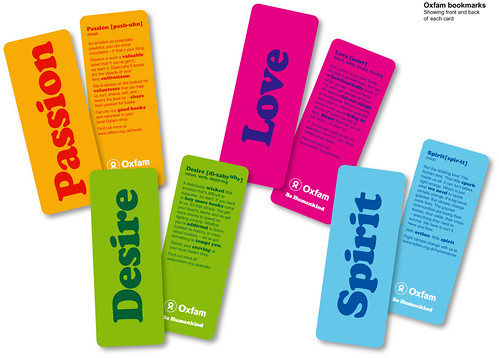 |
| Creative Commons license: retrieved from Flickr.com. Image by Christian Guthier. |
Desire to Learn
I encountered social bookmarks about five years ago when I read about Delicious.com. I was intrigued by the idea of being able to mark a page or website and access it from anywhere. This was particularly important to me because I was constantly trying to remember sites I had bookmarked at home when I was at work or vice versa. I quickly set up an account and got started, but didn't use it nearly as frequently as I hoped. Technology was changing quickly and my flashdrive proved to be a useful way to save things I needed when shuttling between home and school. It certainly wasn't a "social" tool, as I was only using it for myself. I found myself rebuffed by my staff when offering to share or introduce them to this great tool. As a result, I didn't have a community that I could share with and I certainly didn't think anyone outside of my immediate school circle would want to visit the sites I was finding, because they were mostly related to the work of my colleagues or the work I was doing in the library or in the French as a Second Language class I taught.
Social bookmarking didn't really become useful to me until I took Joanne de Groot's Resources for Elementary and Secondary School Libraries course during the summer of 2010. As a class, we were sharing so many good sites and articles that social bookmarking became a truly useful process. It was interesting to see what people were reading beyond the class assignments and what sites were helping them in their professional work. Diigo was a required site for the course and I found it helpful, but not as familiar as Delicious. I followed Joanne's links, but didn't post any of my own. I loved that it could store images and notes, though. The potential for classroom use looked huge. Like all new things, it takes frequent practice to become familiar enough to enjoy a new tool. I think that Diigo could prove to be exceptionally useful for work in my school life, if not my personal life. One of the things that should be noted is that I don't tend to share things with friends because I don't have a large social circle. The work that I do as a community volunteer tends to be with older citizens who are not really involved with technology, so email is as complicated as I get with many people I socialize with. With my colleagues, this is beginning to change. I share much more than I used to, with both teacher librarians and with my school colleagues.
For this course, I've also picked up Evernote and have just started to explore the options available. I like that I can mark a whole page and have it show up when I'm in Evernote. However, I find many of the features similar to those in Zimbra (my district's web-based email and sharing tools program). In both of these programs, I can tag, share with colleagues and organize my notes and pages into shared notebooks. The bonus with Zimbra is that my email can be filed into "briefcases" which can be shared and I can then add notebooks and pages to the briefcases as well. I also like the fact that Zimbra has shared calendars which are linked to the email and briefcases, also. Evernote is useful, but not as useful for sharing as Zimbra can be. It may take more time to find the full benefits of Evernote for my teaching situation and perhaps it may not be as useful as other tools.
Passion for the New
As I searched for current information (blogs and articles) on social bookmarking tools, I was surprised that many of the articles and blog posts seemed to be older. Edubloggers have commented on Evernote recently, but not on other social bookmarking sites. Even a search through my school's database didn't find anything particularly useful beyond articles from 2006 that were specific to bookmarking sites. Perhaps these tools have become part of the larger collection of social tools used to organize and manage information, yet the function of folksonomies and taxonomies as demonstrated so wonderfully in the video "Information R/evolution," (as recommended by Berger and Trexler) is really the key to how these tools will be useful to students in the 21st Century. This is perhaps the hardest part for me to grasp, as sorting information into traditional categories is how my brain has worked for so long. I still default to keywords that make sense in a library setting when I am tagging. Students, on the other hand, could organize the information they find, in any number of ways that are personally useful, then share those tags with their friends and peers in ways that make sense to young adults. It makes the idea of the Dewey decimal system almost outdated. I am aware that some librarians are beginning to rethink the organization of shelves and this idea is intriguing. Does "The internet need a Dewey Decimal system?" or are we moving the other way? Are the Dewey's Days Numbered? Information organization is clearly something we need to help students with. Will Richardson comments, "Managing all of that information is wholly different from managing the information streams most of us grew up with in the paper world. ...How do we find the most current reliable information? In many cases, we get that information not by mining Google, but by mining our networks..." (Richardson, 2010.) To create excellent information miners, we need to ensure that they're comfortable working in the collaborative environments of social bookmarking sites! Now to make sure I can tag along with the best of them.
 |
| Creative Commons license. Retrieved from Flickr. Image by Luc Legay |



No comments:
Post a Comment